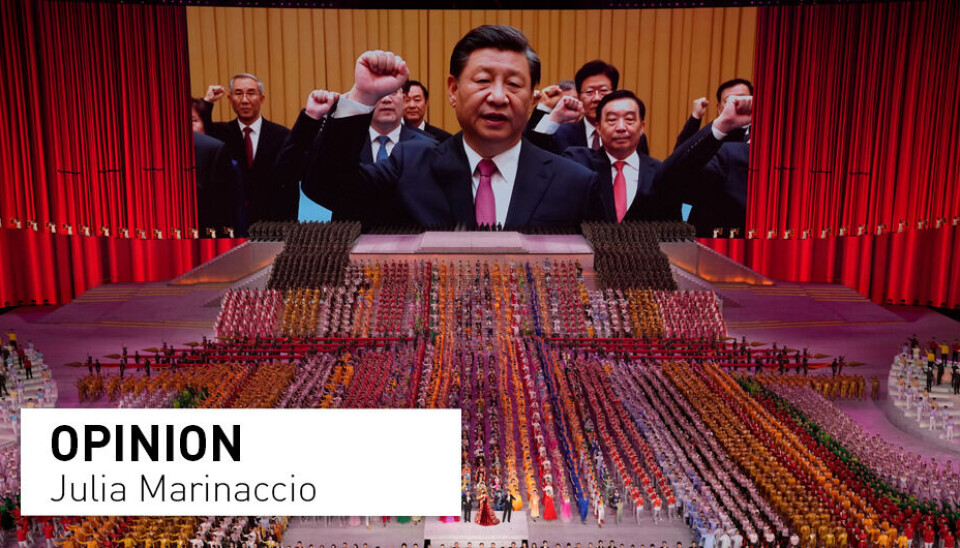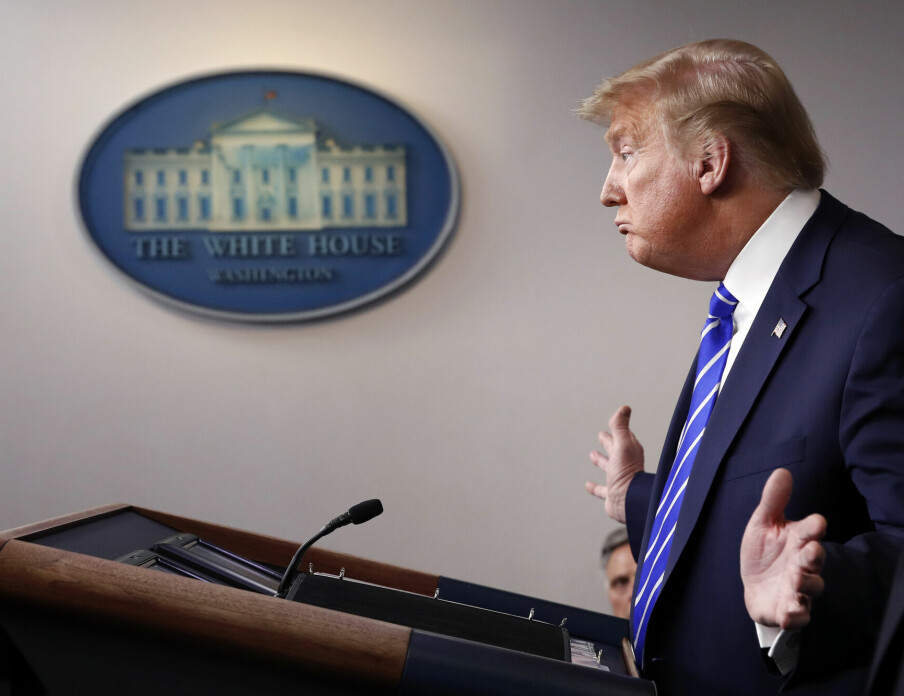Opinion:

High Skies and Far-Away Emperors: The Pitfalls of Digital Environmental Governance in China
OPINION: Throughout history, the Chinese central government has had only limited knowledge about local realities. Digital technologies now promise to make regulation and supervision more targeted and effective. But will the central government ever be on top of things?
In the late 2010s, two local governments in Yunnan Province and Shaanxi Province sprayed green color on exposed mountain cliff faces. In both cases, local officials had been compelled to achieve environmental targets under the cadre responsibility system—a performance appraisal system in which officials in leading positions at all levels of administration must fulfill policy targets defined by higher levels. But rather than planting trees and waiting for them to grow, officials resorted to embellish landscapes by coloring mountain cliffs.
From a distance and bird-eye view, these areas appeared afforested; even aerial photography, a forest monitoring technique used in China since the early 1950s, could not easily detect them as fake—a fact local officials were aware of. However, thanks to Chinese villagers and journalists drew this peculiar “mountain greenery” broad national and international attention. The incident was reported in the widely-read Chinese media outlet Sina (New Wave Net) and the British Guardian. The green sprayed mountains in the Shaanxi also inspired cartoonist Cao Yi to draw a humoristic cartoon (can be viewed on the China Media Project site).
In addition to being publicly shamed, the responsible officials from both localities were reprimanded and probably removed from their posts.
Limited oversight results in information asymmetry
The Chinese central government in Beijing governs a country as vast as 9.6 million square kilometers and a population of almost 1.4 billion people. Its jurisdiction covers 33 provinces and provincial-level administrative entities, which themselves administer 334 prefectures, nearly 3000 counties, and 40 000 townships. Keeping oversight in such a vast administrative system is understandably challenging.
Unintended consequences only reached higher levels’ attention when roofs were already burning.
Throughout history, central decision-makers have had only limited knowledge about what local policy-implementers were really doing. This is what research calls an ‘information asymmetry.’ Before the Information Age, news flowing up and down the state bureaucracy had significant temporal delays. Moreover, having gone through several ‘filters’ of vested interests, they were also heavily distorted before reaching the central government.
Due to the center’s limited monitoring capacities, local governments had ample leeway. True to the motto “heaven is high, and the emperor is far away,” they decided which areas to cooperate and how and what kind of information to communicate to higher levels. Kevin O’Brien and Li Lianjiang referred to this phenomenon as “selective policy implementation.” Serious implementation gaps or unintended consequences only reached higher levels’ attention when roofs were already burning. These dynamics continue to characterize Chinese politics until today.
Information flows and bureaucracy
Although a certain degree of flexibility and discretion are necessary for all bureaucratic systems, information asymmetry crucially undermines effective policies in China. Experts in and outside China, including Ran Ran from Renmin University in Beijing, Genia Kostka from Freie Universität Berlin, and Arthur Mol from Wageningen University, have repeatedly called to improve environmental data management. They point out that the availability, reliability, ownership, and regulation of data are essential for decision-making and effective policies.
Authoritarian theories argue that information asymmetry in China is primarily owned to its political system, in which media censorship suppresses the free circulation of information. Tai Qiuqing, a former research fellow at Yale University and now strategy senior director at KE.com, a leading Chinese internet company, explains that the central government’s efforts to ban negative news that could jeopardize legitimacy are further exacerbated by local officials’ desire to hide accidents and other mishaps to avoid punishment.
They pretend to cooperate without actually performing tasks mandated by higher levels.
But besides information suppression, local officials often just distort or falsify information as part of a blame avoidance game in bureaucracy, so Ran Ran. Rather than from the authoritarian political system, this behavior results from two structural conditions: Firstly from a fragmented bureaucracy, in which local officials respond to different superiors implementing various and often conflicting policy targets— Kenneth Lieberthal coined the term ‘fragmented authoritarianism’ to describe this phenomenon. Secondly, from a specific policy mode that stimulates competition among local governments to achieve or even surpass these targets. Christian Göbel refers to this dynamic as ‘competition under hierarchy.’
As the central government relies on data and information communicated by lower levels and can only monitor local developments selectively—for example, by sending central inspection groups—localities have devised strategies to twist and misrepresent the truth. In doing so, they pretend to cooperate without actually performing tasks mandated by higher levels (often for understandable reasons). The example of mountain greenery given above is just one illustrative example of local governments’ creativity.
Digital environmental governance
This and other episodes taught the central government a critical lesson. To cope with information asymmetry, it needed to upgrade its monitoring techniques. If monitoring techniques, including aerial photography and remote sensing, had fared better in producing fine-scaled images, local governments might have refrained from deceiving higher levels in the first place or could have been detected much earlier.
Since then, a good decade has passed, and we observe a new set of entities taking the lead in China’s environmental governance. At the beginning of the 2020s, the use of devices and applications of information and communication technologies (ICT) in environmental management and other policy areas has rapidly advanced. Digitalization is expected to profoundly change communication, resource use, decision-making, and political steering in multiple political fields. Precisely, ICT promises a more direct contact within the administrative system, more reliable and accurate data at a finer spatial and temporal scale, thus better oversight for the central government.
More than just rhetoric?
At a press conference in January 2021, the Chinese Ministry of Ecology and Environment reported that a central inspection group combined satellite remote systems, drone aerial photography with traditional on-spot exploration, surveys, document analysis, and meetings to investigate a case of forest destruction in Dunhuang in Western China. The prominent position of advanced technologies in the official rhetoric reflects the high priority the central government attaches to digitalization and ICT-supported monitoring. It hopes that these can make hierarchical instruments of regulation, supervision, and punishment more targeted and effective.
The recently issued 14th Five-Year-Plan even dedicates an independent chapter to digitalization, outlining a new vision of “quality development” with the help of digital tools. Increasing government spending manifests that this is not just official rhetoric. According to Jesper Schlæger and Jingjing Zhou, expenditures on environmental monitoring equipment have surged from roughly RMB 1 billion in 2006 to RMB 5 billion in 2013.
Yet, the transformative potential of data-driven governance is not uncontested. In a recent special issue of the Journal of Environmental Planning and Management, scholars caution to the extent that whether shifts in governance modes and processes have taken place is highly questionable. It is equally elusive what implications the recent explosion of information and digital technologies has for China’s environmental regulation and governance.
Thus, time will tell the extent to which these technologies can reduce information asymmetry between central decision-makers and local policy-implementers. What is certain is that we will continue to read about the strategies of how local governments and officials play what researchers like Li Jiayuan from the South China University of Technology refer to as the blame avoidance game and eventually defy the center’s digitalized oversight.
Share your science or have an opinion in the Researchers' zone
The ScienceNorway Researchers' zone consists of opinions, blogs and popular science pieces written by researchers and scientists from or based in Norway. Want to contribute? Send us an email!




























